Article
5 Delicious Emirati Cuisine To Try In Dubai
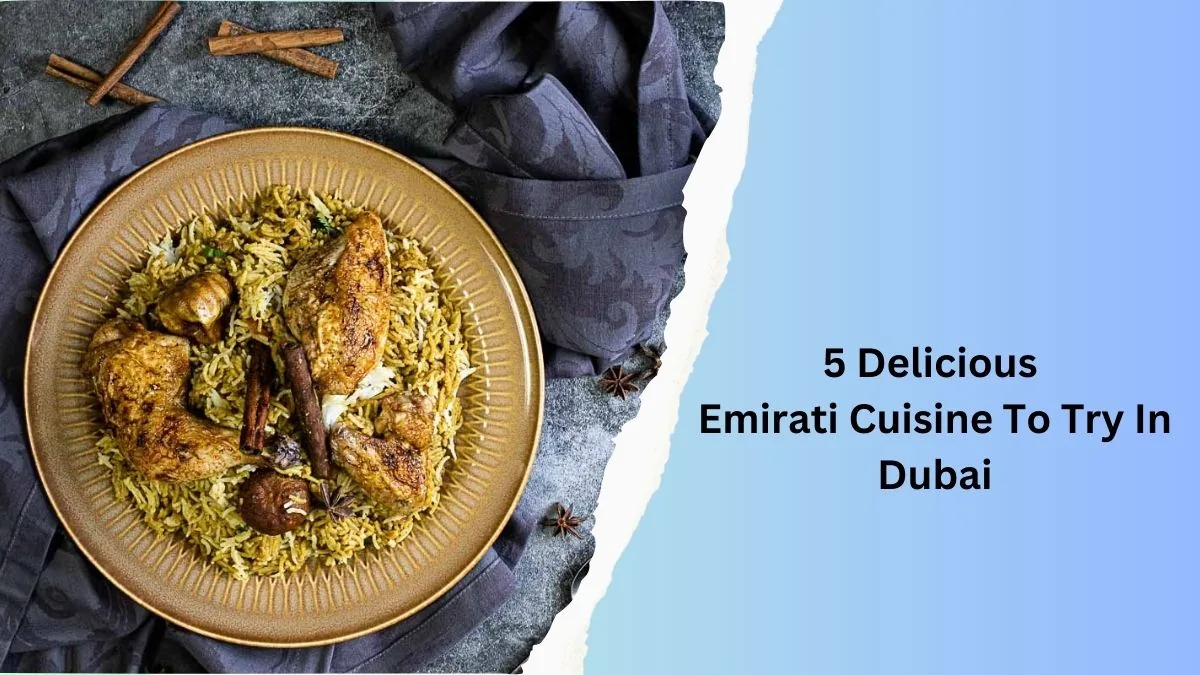
Emirati cuisine is famous for its rich flavor and striking Aroma that lingers with you for a long time. Like their culture, their food too is nothing less than a splendor to your senses.
Deeply rooted in the Bedouin diet consisting of meat and camel milk, The cuisine also takes the best advantage of the Persian Gulf by including a plethora of fish and other seafood dishes, and also of their dry fruit plantations which consist of dates and other nuts along with the extremely flavorful blend of spices like turmeric, saffron, cinnamon, etc.
Since the vast majority of land consists of desert terrains, vegetables are not the key factor in dishes. Inspired and influenced by Asian and Middle Eastern Cuisines Emirati dishes are unsurprisingly mouth-watering.
Popular Emirati Cuisine
Dubai is a melting pot of cultures where you can find flavors from around the globe. But one must not forget to try the authentic cuisine of the nation; The Emirati Cuisine.
Here are 5 of the most popular Emirati food that you should not overlook when you are in Dubai:
1. Majboos
Rich in both proteins and carbs, this rice dish is considered a national meal in almost every country in the Arabian peninsula. And like every signature dish of Arabian, and Middle Eastern cuisine, Majboos is extremely rich in flavor. The key ingredient is the rice variety of Basmati.
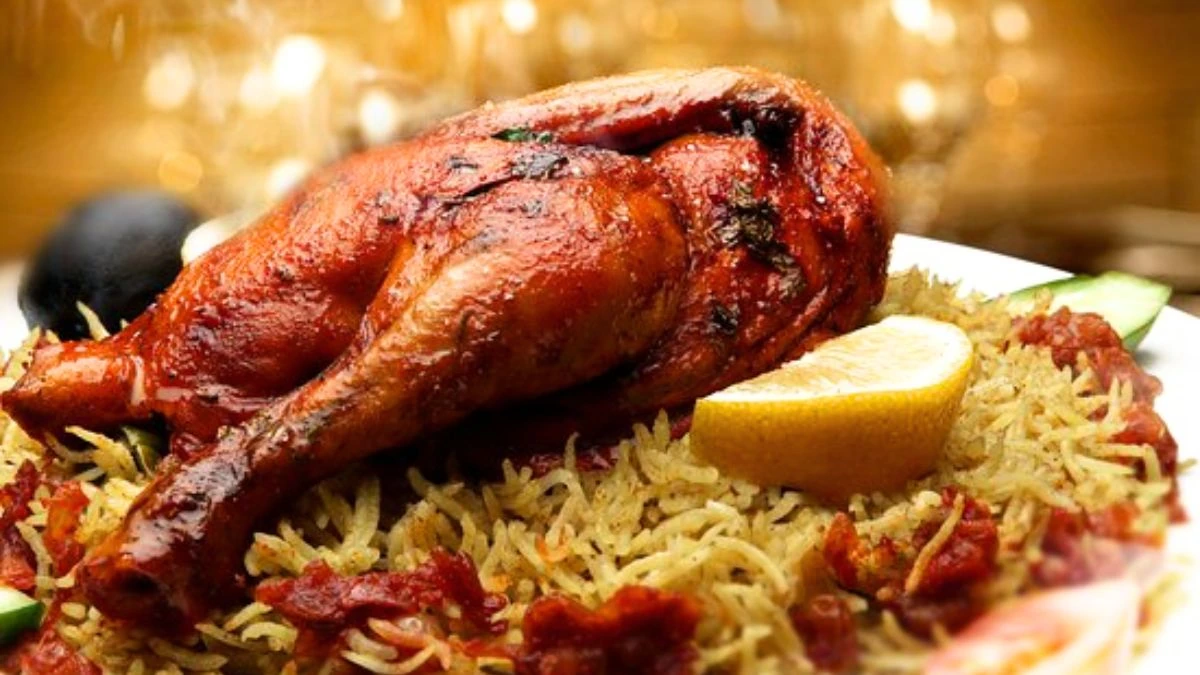
Basmati rice is unique as it expands twice its size lengthwise maintaining its characteristic length and slenderness. If not basmati, another long-sized variety of rice is used.
Now for the choice of protein, Majboos are made with various types of meat, and fish like lamb, mutton, chicken, and even shrimp majboos are available. The most popular fish choice for Fish Majboos would be Zubaidi, which is a white pomfret fish.
Now the special ingredient that makes this dish flavorful is the signature Arabian spices which include cumin, coriander, cardamom, bay leaves, black lime, or loomi
Since the Majboos in itself is rich in flavor, it is not served with a lot of side dishes, plain yogurt or cucumber yogurt salad, or the Fattoush salad is served alongside.
2. Harees
Call it Harees, Hareesha, Harisa, or Jahreesa, this dish is sure to have a mouthwatering quality to it. Made with broken wheat or barley smashed with meat, usually mutton; this dish has a thick gruel or porridge-like consistency.
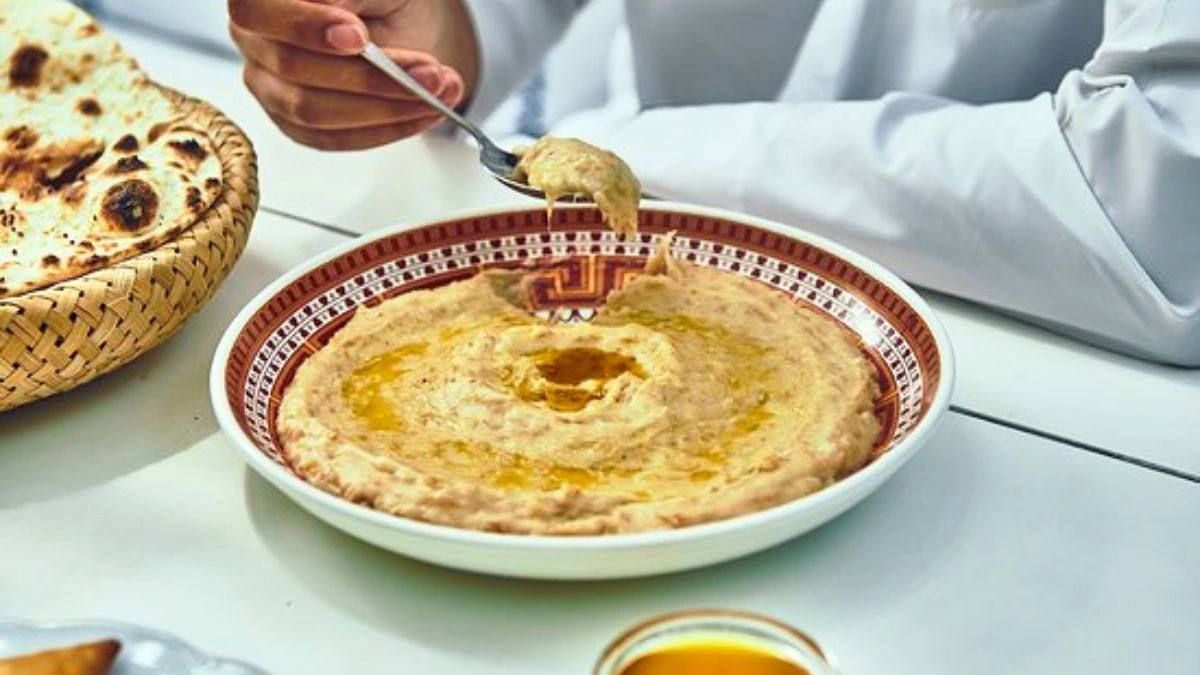
Different Arab cultures have their unique version of this dish. But Qataris and Emiratis tend to share a similar taste of enjoying their harees just like it plain with just meat and olive oil. Wheat or Barley and salt are put together in a pot and boiled for several hours.
And when this mixture reaches a thick consistency like that of porridge, chunks of meat, which are usually chicken, lamb, mutton, or veal are added to the gruel mixture.
This dish is boiled again for several hours and later mixed with all the spices like cinnamon, salt, and pepper to bring out the flavor.
3. Ghuzi
Often cited as the national dish by various sources, it’s super filling with slow and whole-roasted meat, preferably lamb or mutton which is usually served like a kebab with vegetables and hazelnuts with a major serving of rice.
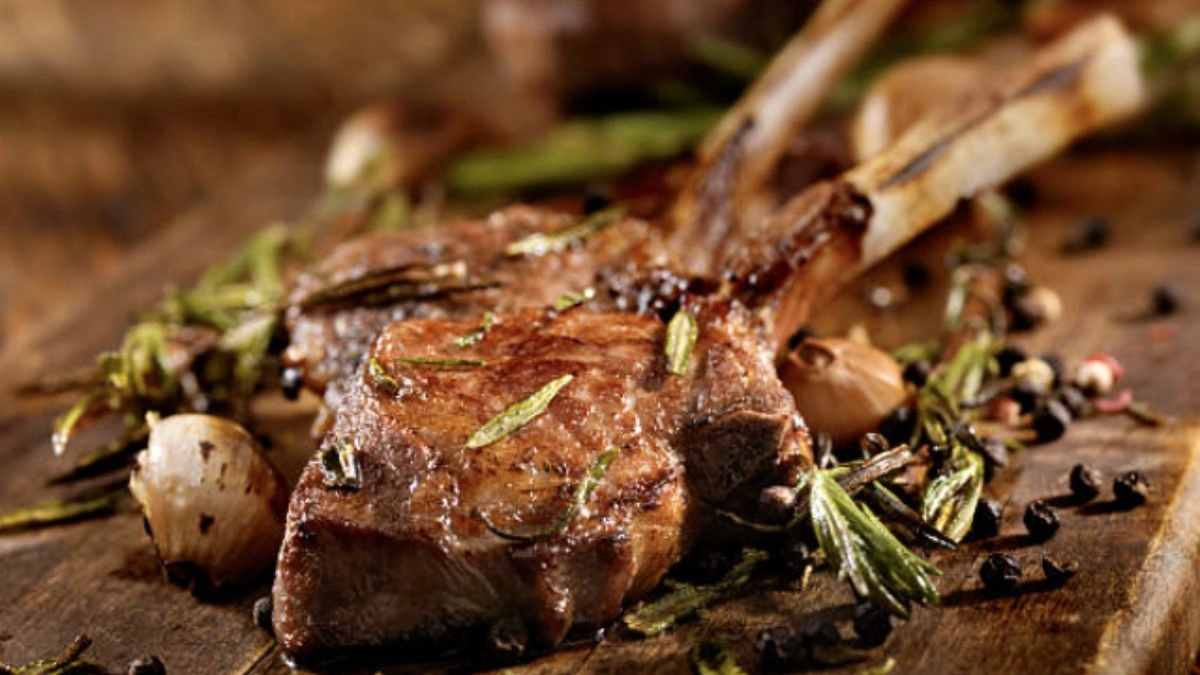
4. Luqaimat
Luqaimat originated in Saudi Arabia and later turned into one of the signature desserts of Arabian cuisine. This dish will grace your sweet tooth with its perfect dough that is sweetened with syrup
There are various other origins for this dish other than Saudi Arabia like Greece, Cyprus, Egypt, and Turkey. Luqaimat was described as early as the 13th century by the author Al-Baghdadi as luqmat al-qadi or the “judges morsels”
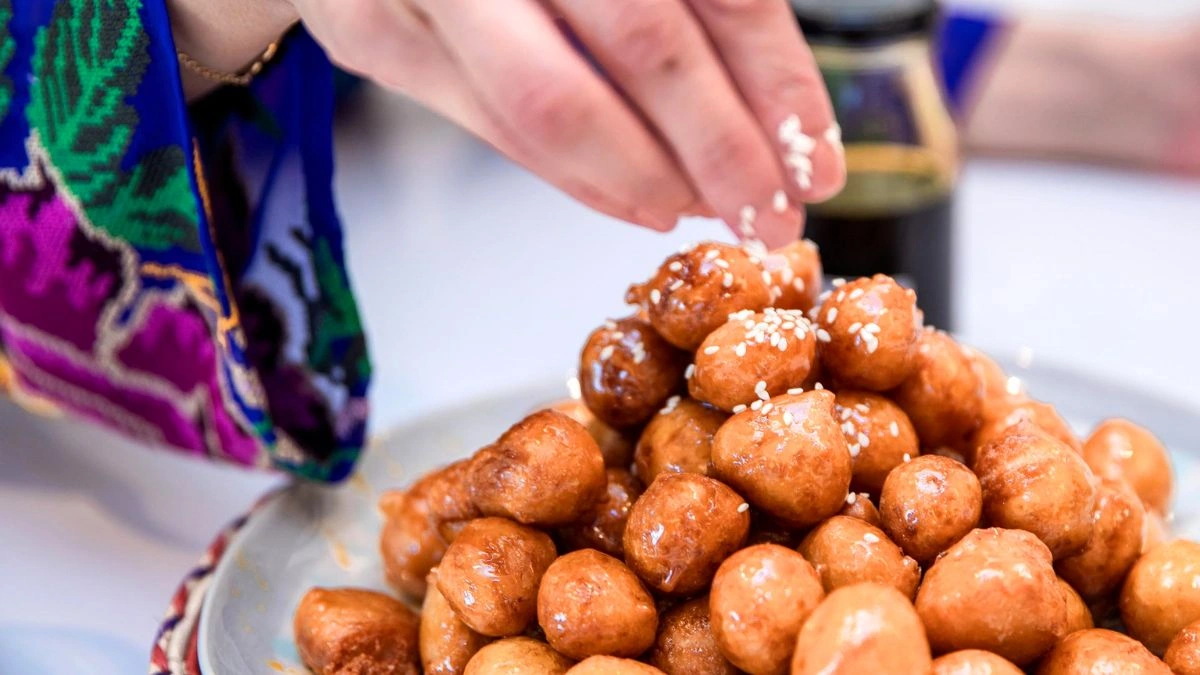
This sweet dish is also mentioned in the story of The Porter and the Three Ladies of Baghdad in One Thousand and One Nights. Luqaimat is made by deep frying dough that was treated with yeast and fried to a golden brown color which is later dipped in date syrup, rolled in honey, or dusted with sesame seeds or sugar.
Their texture is so pleasing with a crunchy coating on the outside and a soft, sweet, and airy inside. Plain Flour/maida, sugar, yeast, oil, saffron, and cardamom. Make sure to eat it while it’s warm for the best Luqaimat experience.
5. Maqluba
It’s again a single-pot rice dish with lots of meat and vegetables cooked. It’s filling, nutritious and tasty. The title of this dish translates to “upside-down” since the pot with fried vegetables, rice, and meat is flipped upside down to serve.
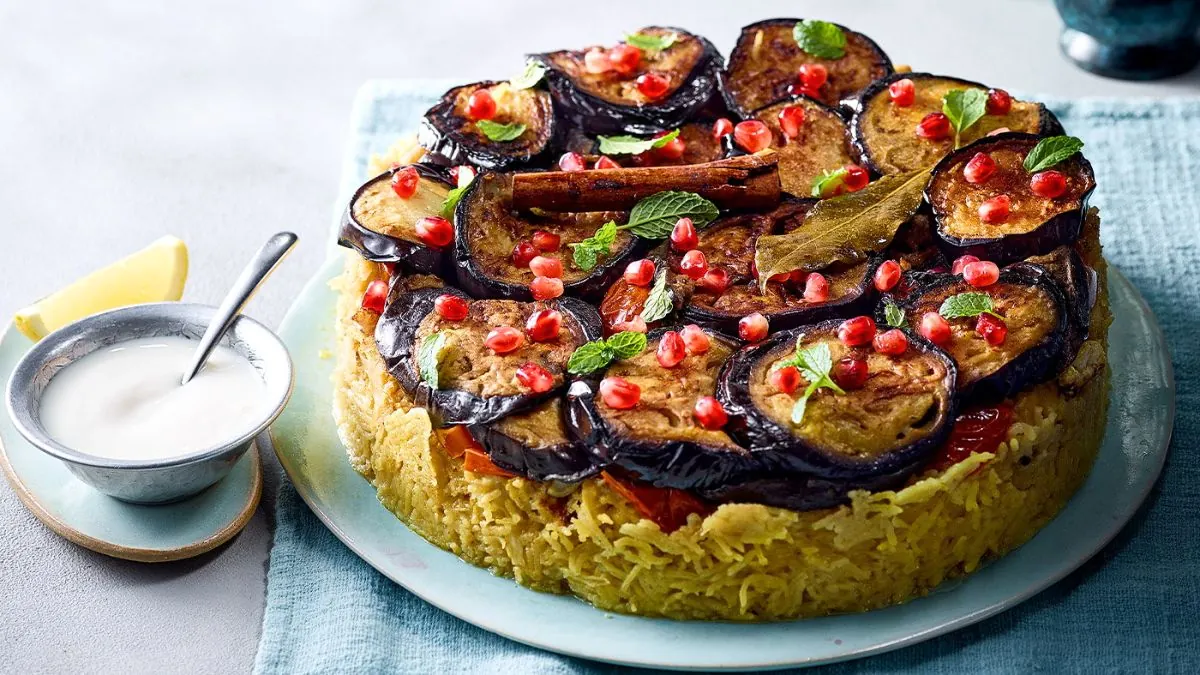
The existence of this dish can be traced back to the 13th century. Many different versions of the dish exist throughout Iraq, Lebanon, Palestine, and Jordan.
Ingredients Used For Making Unique Emirati Cuisines
Here is the list of the unique ingredients they used while making emirati cuisines.
Saffron
Saffron has been a long-time favorite ingredient for the Emiratis to make their food even more aromatic. Made from saffron crocus this might be one of the most expensive spices in the world. It’s also a distinctive part of Arabian coffee that makes it even more special.
Dates
Dates are not any fruit to the Emiratis. It is an integral part of their culture and heritage. With the very limited vegetation capable of growing in the desert regions, the people adored and protected the date palm and used almost every single part of the tree.
Dates are eaten fresh or dried and are also an integral part of the Ramadan season as they are used to break the fast for the iftar dinners. Rich in nutrients and with a signature sweetness, this fruit alone is eaten after main courses as desserts or used in various dishes to bring the sweet flavor.
Cardamom
Originating from Southern India and Egypt, cardamom is used throughout a wide range of dishes from their coffees to heavy meals and even in the Emirati’s favorite dessert Luqaimat.
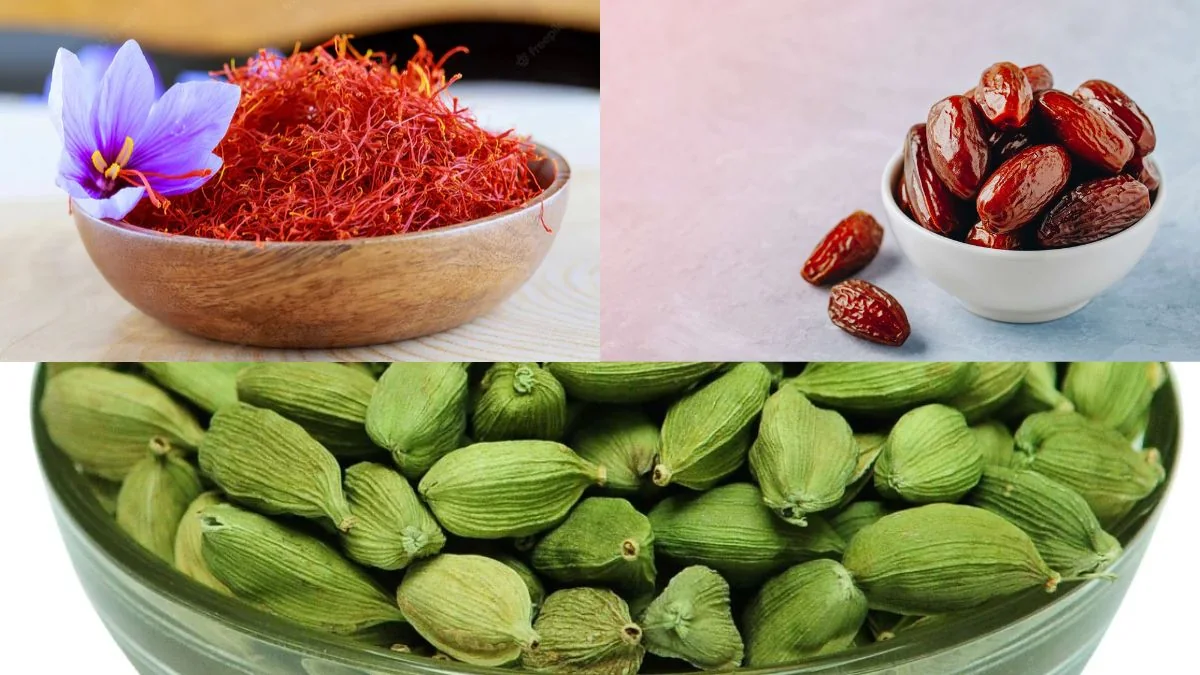
The queen of spices is said to have originated in the Malabar Coast of southern India.
Camel Meat
Camels also were an important part of desert life. From the Nomadic Bedouins to the very advanced Emirati citizens, all consider camels as an integral part of their heritage.
Camel meat is still considered precious and is only used for special occasions like marriage, Eid, or National Day. Camel milk is also used for various dishes and desserts and is considered highly nutritious.
Loomi
Also known as dried lime, loomi is dried under the sun for a long time. Originating in Oman, loomi are used to add sour flavor to soups and dishes.
Ghaf Leaves
Ghaf leaves were traditionally used in stuffed bird dishes to give them a unique flavor. The Ghaf tree has been an integral part of Desert life in the Emirates. The tree was used as a source of food, medicine, and shelter for the ancient Bedouin natives.
Coined the national tree of UAE, its leaves are rich in protein The leaves of this tree were also used as a source of food for desert animals too.
Bzar
There’s this unique spice blend that Emiratis use in their cuisine known as bzar. It consists of cumin seeds, cloves, cinnamon sticks, coriander, nutmeg, cardamom, black peppercorns, ginger powder, dried red chilies, and turmeric powder.
Dining Customs and Etiquette
To dine, for the people of the Emirates, is not just a time to eat, they consider it as a chance to socialize, mingle and get to know each other. Even business meetings will be conducted amidst delicious food. Dining is a very social affair for them.
And this might come as very surprising to people accustomed to Western etiquette, but it is considered polite to arrive 5-15 minutes late for the occasion. Expect to eat using your right hand. left-handed people can eat using utensils.
Arabs usually eat with their hands, hence Hand Hygiene is important. Be ready to always say yes to more food because it is considered impolite to refuse food.
If you are joining a family for the food don’t be surprised when they prefer being seated on the floor with mats and cushions. If you choose to eat with utensils make sure you leave the cutlery facing up in the middle of the plate after finishing the meal.
And after a very filling and scrumptious meal, you can expect a hot qawah too.
best places in Dubai to try Authentic Emirati Cuisine
From the local, traditional joints to the exquisite malls with lavish restaurants, Emirati cuisine is always the tastiest, wherever you choose to try it. Here is a list of a few restaurants that would be an exciting destination for you to learn a bit more about Emirati cuisine as well as Emirati heritage.
Its vintage decor takes us back to the Emirate in the 60s, Al Fanar restaurants are not just an Emirati food destination but also a mini museum. With its very distinctive and rustic interiors, Al Fanar will be a delightful experience. There are four branches in Dubai Festival City, Al Barsha Pond Park, Al Seef, and Time Out Market, Souk Al Bahar.
Claiming to be the first authentic Emirati restaurant since 1997, you can enjoy your time in the perfect ambiance with scrumptious Emirati meals. Logma is another destination where you could go for both the sweet and savory, the best of both worlds in the fantastic Emirati cuisine.
Sheikh Mohammed bin Rashid Al Maktoum Center for Cultural Understanding might be a perfect place for someone who loves to explore rich culture and cuisine. You would be walked through the traditions and culture of the UAE by expert guides which will be an exquisite experience to learn and to be mesmerized.
This place started working in 1998 with its aim to bridge the gap between different nationalities as Dubai is the melting pot of culture. With its motto ‘Open Doors Open Minds’ you will be welcomed and clarified of any doubts that you may have about the culture.
Dubai has always been the epitome of hospitality and brotherhood. People from various lands, come together and live, work, and settle in Dubai because of their extremely cordial nature. This goodness in their culture can also be explored through the delicious food.
Of course, Dubai is a global destination with various cuisines available, but in the perfect Emirati ambiance, it would be a golden opportunity to explore the cuisine they serve. It’s not just the desert terrains or the refreshing scent of Oodh that have volumes of stories to speak, the food they eat and the ingredients they use all have their own stories to speak and history it beholds.
Just be mindful of their few restrictions and treat their beliefs with respect and you are all good to explore. Some of the food restrictions you must be aware of are pork and related products, Alcohol, non-halal products, poppy, cannabis derivatives, etc.
Treat their culture with respect and you can enjoy all the wonders Dubai has in store for you; be it the amazing culture, marvelous architecture, or yummy food.
Frequently Asked Questions
A)Rice, Wheat, Meat, and Fish are the staple foods in an Emirati diet. Since the region is located in a desert region, there are not many vegetables and fruits used.
A)Khuzi is often cited as the National Dish of the UAE.
A) Most Emirati dishes like Majboos, Ghuzi, etc. are made using a single pot, because of their nomadic Bedouin heritage where it would have been extremely difficult to travel with a lot of different utensils.
Saffron, thyme, loomi, cardamom, turmeric, cinnamon, etc are the major spices Emiratis use in their dishes.
Camel was a significant part of the ancient nomadic desert life. This animal provided them with milk and also was a form of transportation in addition to being a major source of sustenance.
Hence camel meat was reserved for special occasions like weddings, Eid, the birth of a child, or any other auspicious happenings